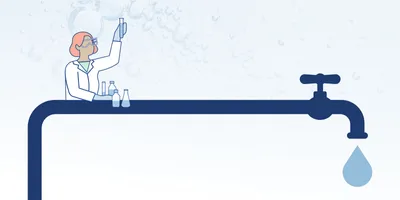Sustainability continues to be a dominant topic in today’s media and news cycle. In recent years some companies, like the software giants of Silicon Valley, have made major strides toward becoming more environmentally conscious. Similarly, leading life science and biopharmaceutical companies are setting ambitious goals to reduce emissions and rely on clean energy. However, laboratories still contend with challenges on the road to sustainable research; namely, energy usage and plastic waste generation.
Energy consumption
Energy consumption is one of the biggest sustainability hurdles researchers face today. All the equipment, instrumentation, and computers that labs depend on demand a lot of power. In fact, it is estimated that the typical lab consumes three to six times more energy per unit surface area than a typical office building.
The power consumption from the equipment is only a sliver of the whole picture. According to a 2017 study published by The Clinical Biochemist Reviews, between 50 and 80 percent of a lab’s total energy consumption is due to the ventilation systems. Of course, there’s no easy solution to these problems. Scaling back usage isn’t an option as instrumentation must be used at full potential to keep up with research needs. Similarly, the ventilation systems must stay running at capacity to maintain the strict environmental parameters that many labs have in place. However, there are ways to improve the efficiency of lab ventilation systems, as you’ll learn in this Big Picture series.
Despite the challenges, substantial progress has been made in optimizing laboratories for clean energy. Leading biotech and pharmaceutical companies are aiming to significantly decrease their greenhouse gas (GHG) emissions within the next few decades. Biopharmaceutical giant AstraZeneca is among the most ambitious with a goal of reducing GHG emissions by 90 percent by 2045. Illumina and Novartis follow with 46 percent and 35 percent reduction goals, respectively, by 2035. By achieving these goals, these organizations will be on the path to achieving net zero within the next few decades, a topic which we asked an expert about in this series.
In addition to these efforts, sustainability progress is also marked by the growth of environmental awareness in the scientific community. A 2020 article published in Nature states, “Scientists are increasingly aware of the disproportionate environmental footprint of their research…many facilities are stepping up, implementing better waste-management practices, and seeking out greener energy sources.” While energy-heavy equipment like ultra-low temperature freezers will always remain necessary in some labs, there is still opportunity to optimize for sustainability, even as early as initial design.
Plastic waste generation
Alongside energy consumption, waste generation is the other environmental hurdle labs are facing today. According to a 2015 Nature study, laboratories across the world generated 5.5 million tons of plastic waste the previous year—the equivalent to 67 cruise liners.
The waste problem extends beyond consumables. Lots of lab equipment cannot be recycled. Centrifuges, for example, aren’t recyclable because the body panels are made from injection-molded foam rather than recyclable plastic or metal. Consequently, an instrument like this can only go to a landfill when it reaches end of life.
Despite the alarming statistics, progress is being made in addressing the plastic waste problem. Just as scientists are becoming more proactive in addressing energy consumption, they are also developing ways to address lab waste. For instance, in 2020 a research group from a microbiology laboratory published a paper detailing the results of their own efforts to curb waste. Their efforts included autoclaving and reusing consumables that would ordinarily be disposed of, like plastic tubes, and replacing single-use consumables with reusable tools where possible. After tracking the results of the new practices for seven weeks, the researchers found that their efforts had decreased their lab’s rate of waste generation considerably, saving 43 kg of waste in the four-week trial period. This equates to 516 kg of waste saved per year.
Lab Management Certificate
The Lab Management certificate is more than training—it’s a professional advantage.
Gain critical skills and IACET-approved CEUs that make a measurable difference.
Similarly, the 2015 Nature article referenced above also urged researchers to take measures against plastic pollution. It also outlined potential ways that funding agencies could incentivize eco-friendly processes, such as funding recycling facilities and mandating greener processes as a requirement in the grant application process.
What does the future look like for lab sustainability?
Environmental awareness is growing in the scientific community. Both large corporations and small research labs are taking steps to implement greener processes.
Perhaps just as important, this awareness is spreading among the general population as well, especially among younger generations. According to a 2021 report from the Pew Research Center, Generation Z and Millennials are “more active than older generations addressing climate change on- and offline.” Ideally, as these youth grow older, enter the workforce, and start leading labs themselves, they’ll prioritize sustainability and labs may finally shake the reputation of being “energy hogs.”



